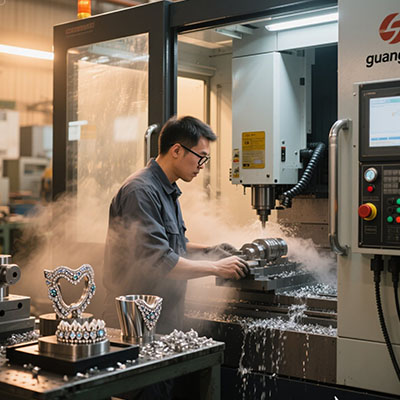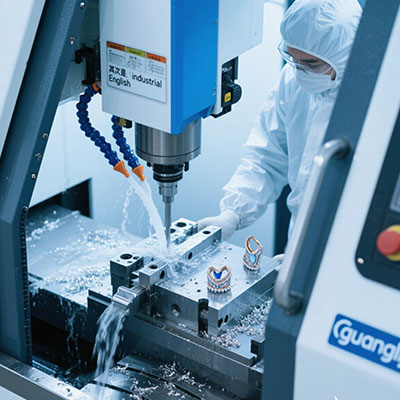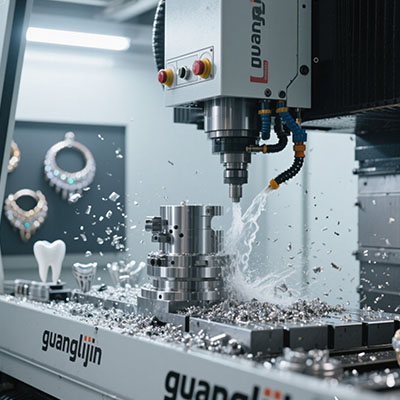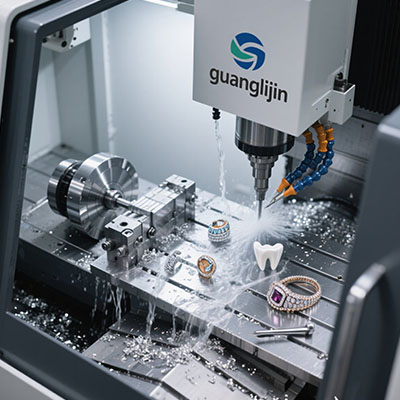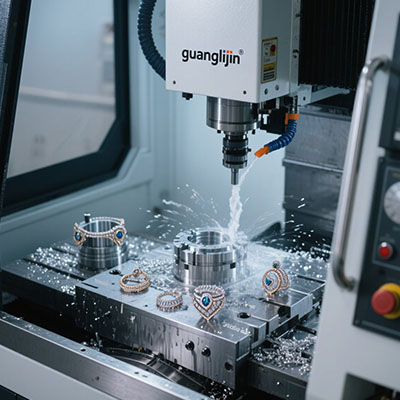High-Accuracy 4 Axis CNC Machine: The Ultimate Precision Solution
Understanding High-Accuracy in 4-Axis Context
What exactly makes a 4-axis machine “high-accuracy”? It’s not just about the fourth axis. True precision comes from rigid construction, high-resolution encoders, and thermal stability. These elements work together to maintain tolerances under ±0.01mm.
The Precision Problem in Modern Manufacturing
Complex aerospace and medical components require features on multiple sides. Traditional machining needs manual repositioning. Each repositioning introduces potential errors, sometimes up to 0.05mm according to NASA’s 2023 machining standards. This simply won’t work for critical applications.
How High-Accuracy 4-Axis Technology Provides Solutions
The solution lies in simultaneous control. A high-accuracy 4 axis cnc machine maintains tool position while rotating the workpiece. This eliminates cumulative errors from multiple setups. The result? Perfectly aligned features and superior surface finishes.
Real-World Application: A Case Study in Medical Manufacturing
Our team worked on a 2025 project involving titanium spinal implants. The part needed helical bone threads and lateral screw holes. Using our high-accuracy 4-axis mill, we achieved all features in one setup with 0.008mm tolerance. The medical client approved the first article inspection.
Accuracy Comparison: Standard vs. High-Accuracy 4-Axis Machines
Not all fourth-axis machines deliver equal precision. Consider these differences when selecting equipment.
| Feature | Standard 4-Axis Machine | High-Accuracy 4-Axis Machine |
|---|---|---|
| Positioning Accuracy | ±0.025mm | ±0.008mm |
| Repeatability | ±0.015mm | ±0.003mm |
| Thermal Compensation | Basic | Advanced multi-point system |
| Ideal Application | General prototyping | Aerospace, medical, optical components |
Source: Machine Tool Industry Research Institute, 2024
Achieving Maximum Accuracy: 5-Step Setup Guide
Precision doesn’t happen automatically. Follow these steps to ensure your high-accuracy 4-axis CNC machine performs optimally.
- Machine Leveling: Use a precision level to ensure the machine is perfectly horizontal. This prevents gravitational errors in the rotary axis.
- Rotary Axis Calibration: Measure and compensate for any backlash in the fourth axis using laser interferometry.
- Workpiece Alignment: Indicate the workpiece to ensure its rotational center matches the machine’s A-axis center within 0.005mm.
- Tool Length Compensation: Precisely measure all tool lengths using a 3D sensor to maintain accurate Z-axis positioning.
- Thermal Warm-up: Run the machine through a 15-minute warm-up cycle to stabilize temperatures before critical machining.
Common Accuracy Mistakes to Avoid
⚠Attention: Many operators overlook thermal expansion. Aluminum expands approximately 0.023mm per 100mm per 10°C temperature change. Machine a cold workpiece in a warm shop, and you’ll miss tolerances by lunchtime. Always control shop temperature.
Another critical error is using worn tool holders. A slightly worn holder can introduce 0.01mm of runout, destroying your accuracy goals. Regular inspection is non-negotiable.
Advanced Techniques for Superior Results
High-accuracy machining requires more than just good equipment. Specific techniques make the difference. For example, trochoidal milling reduces tool load and maintains dimensional stability in tough materials.
Interestingly, sometimes slower feeds yield faster overall results. By reducing feed rates by 20%, we often achieve better tool life and dimensional accuracy, eliminating secondary operations.
Precision Machining Checklist
Before starting any high-accuracy job, verify these points:
- □ Shop temperature stabilized at 20°C ±1°C
- □ Machine warm-up cycle completed
- □ Fourth axis backlash compensation values loaded
- □ All cutting tools measured for length and diameter
- □ Workpiece securely indicated and aligned
- □ CAM program verified with simulation software
Frequently Asked Questions About High-Accuracy 4-Axis CNC
What tolerance can a high-accuracy 4 axis CNC machine hold?
Premium machines can consistently hold ±0.005mm positional tolerance and ±0.002mm repeatability under controlled environmental conditions.
How does 4th axis accuracy impact part cost?
Higher accuracy reduces scrap rates and eliminates secondary operations. While machine cost is higher, total part cost often decreases for precision components.
What maintenance ensures long-term accuracy for 4-axis CNC mills?
Regular ball screw inspection, way lubrication, and rotary axis encoder calibration are essential. Quarterly laser calibration checks are recommended for critical applications.
Can you achieve 5-axis quality with a high-accuracy 4-axis machine?
For many prismatic parts with rotational features, yes. However, true 5-axis simultaneous machining for complex contours still requires 5-axis equipment.
What are the best materials for high-accuracy 4-axis machining?
Stable materials like 6061 aluminum, brass, and pre-hardened steels work well. Avoid materials with high thermal expansion coefficients for the tightest tolerances.
